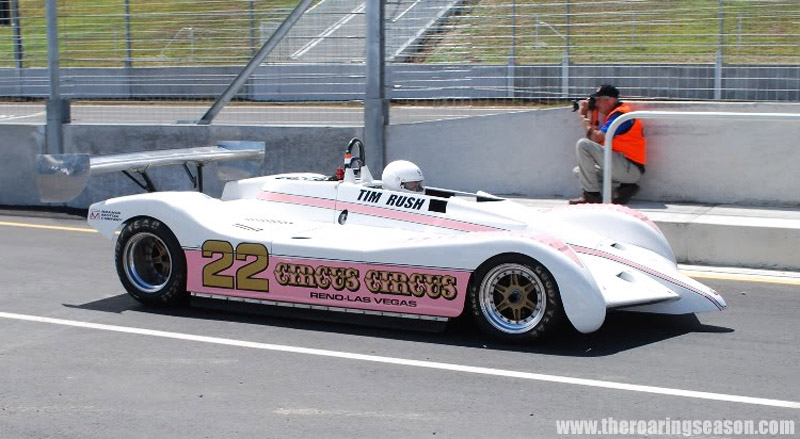-
Administrator


The only outing in 1982 for the GM9 was at Riverside, where McRae entered and practiced, but didn’t start the race. Frustration, a lack of results, and lack of funding forced retirement for McRae, who was now in his early 40s. He sold the GM9 to Andrew Ratcliff, who entered just a single Can-Am event in 1983, at Sears Point, where he qualified 14th, but failed to start the race. He also contested the SCCA Nationals at Riverside, and US Championships at Road Atlanta, where he finished fifth. Ratcliffe entered the 1984 Riverside Can-Am race, but didn’t appear. And with that, the final curtain appears to have been lowered on the spectacular McRae GM9.
There is no doubting McRae still had it as a driver. But his performances in the magnificent GM9 were hindered by a lack of funding. It would have been interesting to consider what could have been achieved with strong financial backing, as the car in its Can-Am form certainly appeared to have potential. The first couple of seasons of the new central-seat Can-Am series featured largely Lola T332 F5000 based cars with hastily prepared sports car bodywork draped over the top. Had McRae possessed the funding to speed up the rebuild process from GM3 to GM9, and take advantage of the transition, with its ground-effects, and McRae at the wheel, could it have been a winner?
The McRae GM3/GM9 is now owned by the Rush family in New Zealand. It remains as last raced, in GM9 Can-Am guise. They also own the clear Perspex cowl from the GM3, and both are displayed in their impressive private motoring museum. The GM9 is brought out on occasion at historic racing events, with Tim Rush at the wheel. He openly admits to finding the ground-effects a little daunting, and has yet to explore anywhere near the big cars adhesion limits. To fully take advantage of ground-effects does require a certain amount of blind faith that the car is going to suck itself onto the road through cornering, and not be spat off into the scenery. It’s an internal psychological battle in which the brain needs to be disengaged at the point where it thinks the brakes should be applied, and continue on at full speed. For Tim, as an amateur enthusiast in a valuable race car with virtually irreplaceable bodywork, there is nothing to be gained, and he is happy to stay well within the GM9s limits.
But it’s a great car to see, and its sheer size is something to behold. Tim and his father Terry are genuine enthusiasts, and enjoy bringing this special car out for others to enjoy as often as they can.
Thanks to David Blanch at Autopics www.autopics.com.au for the black and white GM3 photo that leads this story, Geoff Russell for the colour photo of the GM3 in Post 2, Daniel Mensinger for the use of his father John Mensinger’s photo in Post 3 of the GM9 on debut at Riverside.
 Posting Permissions
Posting Permissions
- You may not post new threads
- You may not post replies
- You may not post attachments
- You may not edit your posts
-
Forum Rules






 Reply With Quote
Reply With Quote